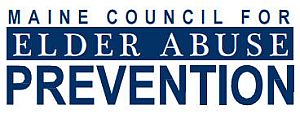Skip to main content
Statistics & Data
- Abuse can happen to anyone. Elder abuse affects both men and women, all cultures, races, and socio-economic groups.
- Elder abuse can happen anywhere; in a person’s own home, in hospitals and nursing homes, in assisted living facilities, and other institutional settings.
- Women and “older” elders (80 years old and older) are the most common victims of elder abuse.1
- Elder abuse is most often perpetrated by the victim’s own family members. 90% of abusers are family members; most often adult children, spouses/partners, and others.2
- Elder abuse is largely unreported. The National Center on Elder Abuse suggests that only 1 in 14 cases of abuse is actually reported to the authorities.3
- A 2010 study reported that approximately 11% of the older population in the United States had experienced abuse or neglect in the year prior. However, this study did not include those elders who suffer from dementia or those living long-term care facilities. This is especially notable because it is believed that those elders who suffer from dementia are at an increased risk of being abused.4
- Major financial exploitation is self-reported at a higher rate than self-reported rates of emotional, physical, and sexual abuse or neglect.5 According to a 2011 study, older Americans lose a minimum of $2.9 billion annually due to elder financial abuse and exploitation.6
- Elders who experience abuse, neglect, or self-neglect face considerably higher risk of premature death than elders who have not been mistreated.7 Older adults who are abused or mistreated are three times more likely to die within the next decade than the same age adults who are not mistreated.8
- National Center on Elder Abuse, Westat, Inc. (1998). The National Elder Abuse Incidence Study: Final Report. Washington, D.C.: Authors
- National Center on Elder Abuse, Westat, Inc. (1998). The National Elder Abuse Incidence Study: Final Report. Washington, D.C.: Authors.
- National Center on Elder Abuse, Westat, Inc. (1998). The National Elder Abuse Incidence Study: Final Report. Washington, D.C.: Authors.
- Acierno, R. et al. (2010). Prevalence and Correlates of Emotional, Physical, Sexual, and Financial Abuse and Potential Neglect in the United States: The National Elder Mistreatment Study. American Journal of Public Health, Vol. 100, 292-297.
- Lifespan of Greater Rochester, Inc., Weill Cornell Medical Center of Cornell University. & New York City Department for the Aging. (2011). Under the Radar: New York State Elder Abuse Prevalence Study. New York: Authors.
- MetLife Market Institute (2011). Elder Financial Abuse: Crimes of Occasion, Desperation and Predation Against America’s Elders.
- Dong, X. et al. (2009) “Elder Self-Neglect and Abuse and Mortality Risk in a Community-Dwelling Population,” JAMA, Vol. 302, 517-526).
- Lachs et al. (1998). “The Mortality of Elder Mistreatment,” JAMA, Vol. 280(5), 428-432.
